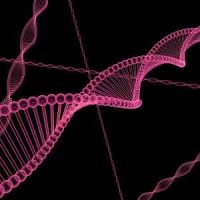Statin intolerance is a worldwide problem concerning the inability to tolerate a dose of statin required to sufficiently reduce cardiovascular (CV) risk. However, it is worth emphasising that with the five-step approach (four-diagnostic steps + therapy), more than 90 percent of these patients might be treated with statins, according to an article published in the journal Cardiology Clinics.
"Statin intolerance refers not only to the lack of statin treatment because of clinical or biochemical symptoms (so-called complete intolerance) but also to the treatment with insufficiently high statin doses or with insufficiently potent statins in relation to the CV risk level," the article explains.
For patients with statin intolerance, after excluding all conditions and risk factors that might increase this risk, and after introducing different methods of management (dose reduction, change of statin formulation, alternate-day therapy, combination therapy), more than 90 percent of these patients might be treated with statins and complete statin intolerance concerns only less than 5 percent of subjects.
"The principal approach should be to try not to discontinue statin therapy. This is a real challenge for lipidologists and those taking care of patients with dyslipidaemia," the article says. "Not discontinuing treatment is especially important for those with a high and very high CV risk."
Statin discontinuation, which might concern even 50 to 60 percent of patients on statins after two years, is one reason why these patients often do not achieve their recommended goals of therapy, the article points out.
Muscle symptoms are the most common adverse effects observed in patients on statins, which may range from muscle weakness, muscle aches, soreness, stiffness, and muscle cramps to muscle myositis and rhabdomyolysis. Alanine aminotransferase (ALT) elevation after statin therapy is rare (<3%) and ALT usually returns to normal without the need for statin discontinuation; in most cases, it is possible to return to the initial doses of statins after 2 to 4 weeks.
"Statin therapy is effective and safe and should be continued in all patients with chronic liver diseases," according to the article, which provides other practical hints on statin intolerance therapy:
- The effective therapy for statin intolerance is critical because these patients, compared with those with good adherence, are at high risk of myocardial infarction and coronary diseases events.
- For patients with statin intolerance change statin formulation, reduce dose, consider alternate-day statin therapy, and combination therapy with ezetimibe and PCSK9 inhibitors.
- Despite some data available, there is still no clear recommendation on the supplementation of coenzyme Q10 (CoQ10) and vitamin D in patients with statin intolerance.
- In patients with statin intolerance not at the goal of the therapy nutraceuticals with confirmed low-density lipoprotein cholesterol reduction properties may be considered as part of the lipid-lowering combination therapy.
Source: Cardiology Clinics
Image Credit: Pixabay
References:
Banach M, Mikhailidis DP (2018) Statin Intolerance: Some Practical Hints. Cardiol Clin 36 (2018) 225–231. https://doi.org/10.1016/j.ccl.2017.12.004
Latest Articles
statins, cardiovascular disease, Statin Intolerance, statin-associated adverse effects
Statin intolerance is a worldwide problem limiting the effective treatment of patients at risk of, or with, CV disease.










